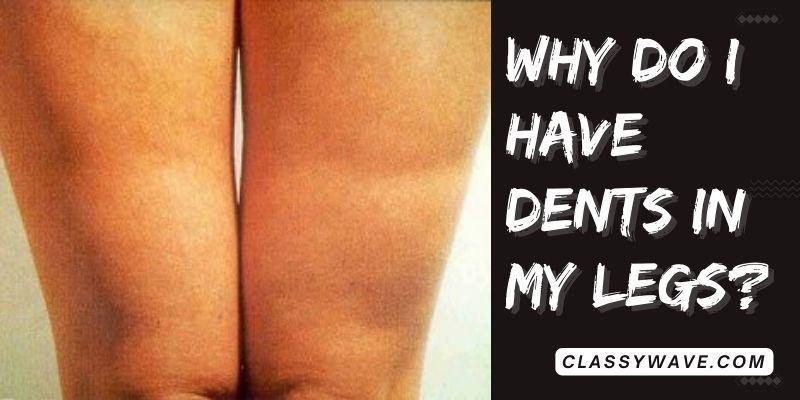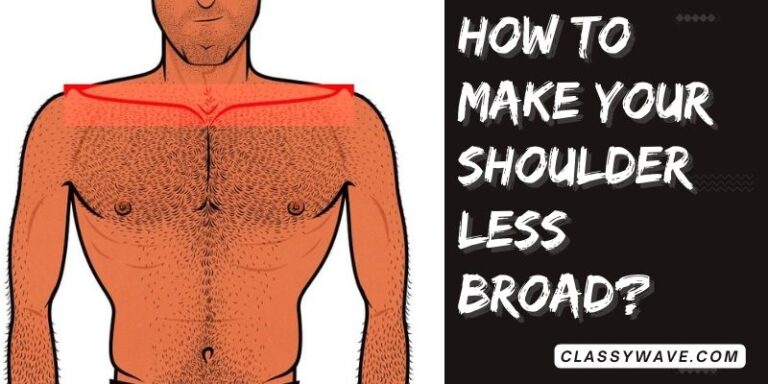why do I have dents in my legs? Addressing Leg Dents
Ever wondered why your legs have weird dents? Let’s explore the cool reasons behind it! Find out what’s going on and how to deal with it. Get ready for a journey into the leg dent mysteries!
If you have dents in your legs, you may be wondering what’s causing them. There are a number of possible reasons, including:
Cellulite
Cellulite is the most common cause of dents in the legs. It is a harmless condition that affects up to 90% of women. Cellulite occurs when fat cells push up against the connective tissue in the skin, creating a dimpled appearance.
Edema
Edema is swelling caused by excess fluid buildup in the tissues. It can be caused by a number of factors, including:
- Sitting or standing in one position for too long
- Pregnancy
- Menstruation
- Certain medications
- Heart failure
- Kidney disease
- Liver disease
Lipodystrophy
Lipodystrophy is a rare condition that causes fat to be abnormally distributed in the body. It can cause dents in the legs, as well as other areas of the body, due to a loss of fat tissue. The exact cause of lipodystrophy is unknown, but it can be caused by genetics, autoimmune diseases, or certain medications. There is no cure for lipodystrophy, but treatment can help manage the symptoms and associated health conditions.
Trauma
Trauma to the legs, such as a fracture or surgery, can cause dents by damaging the underlying tissues, including muscles, tendons, and ligaments. This damage can lead to atrophy, or shrinkage, of the muscles and other soft tissues, which can create a visible indentation in the skin. Additionally, the trauma itself may cause swelling and inflammation, which can further contribute to the appearance of a dent.
Other causes
Less common causes of dents in the legs include:
- Lymphedema (a buildup of lymph fluid in the tissues)
- Venous insufficiency (poor blood flow in the veins)
- Scleroderma (a chronic autoimmune disease that affects the skin and connective tissues)
- Dercum’s disease (a rare condition that causes painful fatty lumps to form on the body)
How to tell if you have dents in your legs
To tell if you have dents in your legs, simply press on the skin. If an indentation remains after you release the pressure, you have pitting edema. This is a common sign of edema, but it can also be caused by other conditions.
If you have dents in your legs that are not accompanied by swelling, it is possible that you have cellulite or lipodystrophy.
When to see a doctor
If you have dents in your legs, it is important to see a doctor to determine the underlying cause. This is especially important if you have other symptoms, such as swelling, pain, or skin changes.
Treatment
The treatment for dents in the legs will depend on the underlying cause.
Cellulite
There is no cure for cellulite. However, there are a number of treatments that can help to reduce the appearance of cellulite, including:
- Massage: Massage can help to improve circulation and break up fat cells.
- Creams and lotions: There are a number of creams and lotions available that claim to reduce cellulite. However, the evidence for their effectiveness is limited.
- Laser treatment: Laser treatment can be used to destroy fat cells and improve the appearance of cellulite. However, it is an expensive procedure and may require multiple treatments.
Edema
The treatment for edema will depend on the underlying cause. If edema is caused by a medical condition, such as heart failure or kidney disease, the underlying condition must be treated.
Other treatments for edema include:
- Elevation: Elevating the legs can help to reduce swelling.
- Compression stockings: Compression stockings can help to improve circulation and reduce swelling.
- Diuretics: Diuretics are medications that help the body to remove excess fluid.
Lipodystrophy
There is no cure for lipodystrophy. However, there are treatments that can help to improve the appearance of lipodystrophy, including:
- Liposuction: Liposuction can be used to remove excess fat from areas of the body where it is not desired.
- Fat grafting: Fat grafting can be used to add fat to areas of the body where it is lacking.
Trauma
The treatment for dents in the legs caused by trauma will depend on the severity of the trauma. If the trauma is severe, surgery may be necessary.
Other causes
The treatment for dents in the legs caused by other conditions, such as lymphedema, venous insufficiency, scleroderma, or Dercum’s disease, will depend on the underlying condition.
Prevention
There are a number of things you can do to help prevent dents in your legs, including:
- Maintaining a healthy weight
- Eating a healthy diet
- Exercising regularly
- Avoiding standing or sitting in one position for too long
- Elevating your legs at the end of the day
- Wearing supportive shoes and socks
If you have any concerns about dents in your legs, be sure to talk to your doctor.
Conclusion:
The presence of dents in your legs can stem from various factors, such as cellulite, edema, lipodystrophy, trauma, or less common conditions. Seeking medical attention is crucial for accurate diagnosis and appropriate treatment. While some causes lack a cure, interventions like massage, elevation, and lifestyle adjustments can alleviate symptoms. Remember, maintaining a healthy lifestyle is key to preventing and managing leg dents. If concerned, consult with your doctor for personalized guidance on your unique situation.
FAQs
Question: Can cellulite cause dents in my legs?
Answer: Yes, cellulite, where fat cells push against connective tissue, can create a dimpled appearance, forming leg dents.
Question: Are leg dents a sign of a serious health issue?
Answer: Sometimes, they can indicate underlying conditions like edema, lipodystrophy, or trauma, requiring medical evaluation for proper diagnosis.
Question: Can exercise help reduce the appearance of leg dents?
Answer: Regular exercise can improve circulation and muscle tone, potentially reducing the visibility of cellulite-related leg dents.
Question: Is liposuction an effective treatment for leg dents?
Answer: Liposuction may help in lipodystrophy cases by removing excess fat, and improving the appearance of leg dents.
Question: Can I prevent leg dents through lifestyle changes?
Answer: Yes, maintaining a healthy weight, diet, and regular exercise, along with proper posture, may help prevent leg dents.







